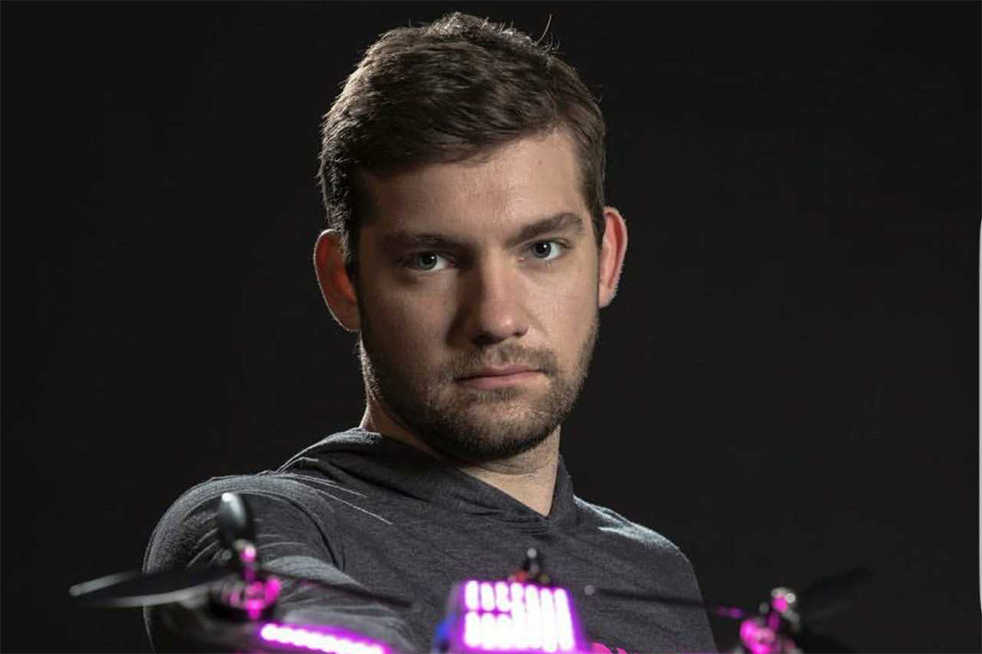If you have ever encountered a drone in the air around Tech’s campus, over Fifth Street Bridge or in a local park, there is a good chance Nick Willard was piloting nearby on the ground.
Willard, a fourth-year AE and professional drone racer, has been flying drones since his senior year of high school, when he spent two semesters as a research lab intern at the University of Kentucky. The experience introduced him to RC planes, and later to
drone racing.
“It got me hooked on doing the drone stuff,” Willard said. “First, it got me into RC planes for about nine months before I actually got my first little racing drone, and I have pretty much done that
ever since.”
Willard races drones professionally and has earned a coveted spot in the Drone Racing League (DRL) alongside some of the best drone racing pilots in the world. The DRL usually hosts six races each year, which air on ESPN, where participants navigate complex, obstacle-ridden tracks at extremely high speeds.
Willard is preparing for two DRL races this March. He also competes in local races throughout the year, and makes a point to get out and practice as often as his class schedule allows.
Willard seeks out various spots around Atlanta to test and fly his drones, from Tech’s campus — if he finds himself ahead of schedule on his way to class — to parks and buildings around town.
“Drones are so tiny. They almost fit in the palm of your hand, so you can take them anywhere you want. I sometimes fly in the green space over Fifth Street Bridge,” Willard said.
While there are many drone-friendly areas around Atlanta, those who fly drones should always exercise common sense and adhere to Federal Aviation Administration regulations.
“Don’t fly directly above people, don’t go over the road, stay far away from the sidewalk,” Willard explained. “Just fly with precaution; if you hit something, the drone could spiral out of control.”
Racing drones, like the ones Willard uses, are designed to fly aggressively at around 60 miles an hour. The aggressive nature of drone racing also calls for professionals to keep a collection of drones on hand.
“Right now, I have around 17 drones,” Willard said. “Around seven of them are in good shape, or in working condition; other ones require some maintenance, while others can just be stripped for parts at this point.”
He only uses about three from his personal collection for racing, and leaves two or three for shooting GoPro footage.
“All the drones are constructed by myself, except for the ones I use in DRL — they use stock drones.”
At each DRL race, the league provides 350 to 400 identical drones for participants to race,
